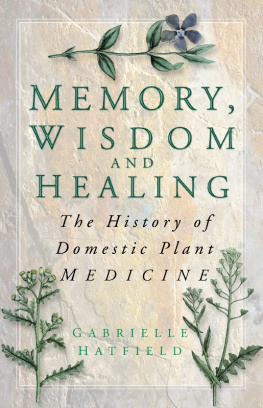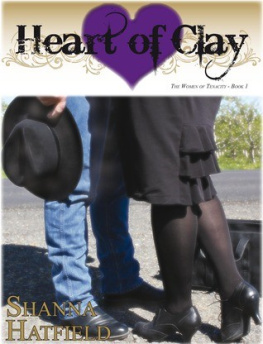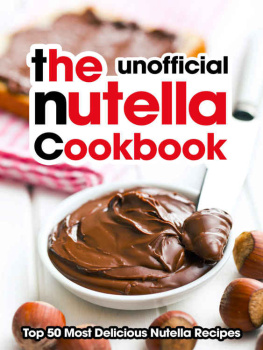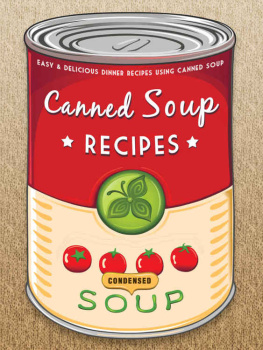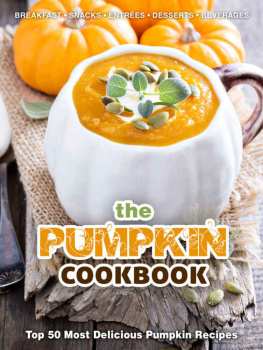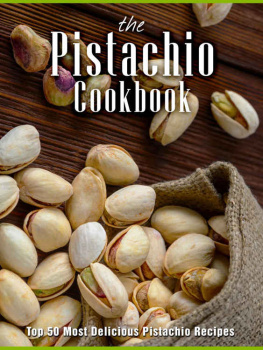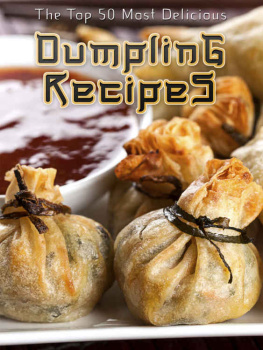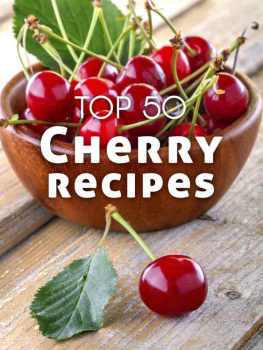Hatfield - Memory, Wisdom and Healing
Here you can read online Hatfield - Memory, Wisdom and Healing full text of the book (entire story) in english for free. Download pdf and epub, get meaning, cover and reviews about this ebook. year: 2013, publisher: Perseus, genre: Religion. Description of the work, (preface) as well as reviews are available. Best literature library LitArk.com created for fans of good reading and offers a wide selection of genres:
Romance novel
Science fiction
Adventure
Detective
Science
History
Home and family
Prose
Art
Politics
Computer
Non-fiction
Religion
Business
Children
Humor
Choose a favorite category and find really read worthwhile books. Enjoy immersion in the world of imagination, feel the emotions of the characters or learn something new for yourself, make an fascinating discovery.
Memory, Wisdom and Healing: summary, description and annotation
We offer to read an annotation, description, summary or preface (depends on what the author of the book "Memory, Wisdom and Healing" wrote himself). If you haven't found the necessary information about the book — write in the comments, we will try to find it.
Memory, Wisdom and Healing — read online for free the complete book (whole text) full work
Below is the text of the book, divided by pages. System saving the place of the last page read, allows you to conveniently read the book "Memory, Wisdom and Healing" online for free, without having to search again every time where you left off. Put a bookmark, and you can go to the page where you finished reading at any time.
Font size:
Interval:
Bookmark:

MEMORY, WISDOM AND HEALING
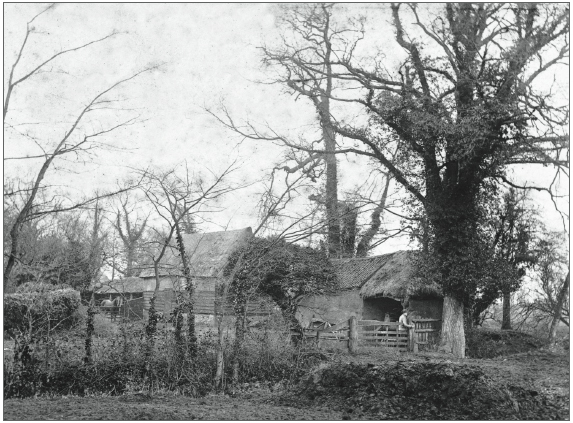
Farm buildings in Suffolk, from an album possibly by Clutterbuck. ( Norfolk Rural Life Museum)
MEMORY, WISDOM AND HEALING
The History of Domestic Plant Medicine
GABRIELLE HATFIELD

First published in 1999 by Sutton Publishing
The History Press
The Mill, Brimscombe Port
Stroud, Gloucestershire, GL5 2QG
www.thehistorypress.co.uk
This ebook edition first published in 2013
All rights reserved
Gabrielle Hatfield, 1999, 2013
The right of Gabrielle Hatfield to be identified as the Author of this work has been asserted in accordance with the Copyrights, Designs and Patents Act 1988.
This ebook is copyright material and must not be copied, reproduced, transferred, distributed, leased, licensed or publicly performed or used in any way except as specifically permitted in writing by the publishers, as allowed under the terms and conditions under which it was purchased or as strictly permitted by applicable copyright law. Any unauthorised distribution or use of this text may be a direct infringement of the authors and publishers rights, and those responsible may be liable in law accordingly.
EPUB ISBN 978 0 7524 9516 3
Original typesetting by The History Press
CONTENTS
L IST OF I LLUSTRATIONS
| Frontispiece | Farm buildings in Suffolk |
| 1. | Common mallow Malva sylvestris |
| 2. | Piglets foraging at Wood Farm, Saxthorpe, in the 1930s |
| 3. | Badmonnie Meum athamanticum |
| 4. | Comfrey Symphytum officinale |
| 5. | Pilewort, lesser celandine Ranunculus ficaria |
| 6. | Periwinkle Vinca minor |
| 7. | Mistletoe Viscum album |
| 8. | Pennyroyal Mentha pulegium |
| 9. | Goosegrass, cleavers Galium aparine |
| 10. | Harvest workers at Brampton Hall Farm |
| 11. | Coltsfoot Tussilago farfara |
| 12. | Houseleek Sempervivum tectorum |
| 13. | Elecampane, horseheal Inula helenium |
| 14. | Shepherds purse Capsella bursa-pastoris |
| 15. | Devils bit scabious Succisa pratensis |
| 16. | Juniper Juniperus communis |
| 17. | Betony Stachys officinalis |
| 18. | Greater plantain Plantago major |
| 19. | Elder Sambucus nigra |
| 20. | Mugwort Artemisia vulgaris |
| 21. | Poppy Papaver rhoeas |
| 22. | Gladden, stinking iris Iris foetidissima |
| 23. | Horseradish Armoracia rusticana |
| 24. | Foxglove Digitalis purpurea |
| 25. | Vervain Verbena officinalis |
| 26. | Ground ivy Glechoma hederacea |
| 27. | Groundsel Senecio vulgaris |
| 28. | Henbane Hyoscyamus niger |
| 29. | Adam Donald, prophet of Bethelnie, Aberdeenshire (170380) |
| 30. | Janet Bell, apothecary, of Elsrickle, Lanarkshire |
| 31. | Good King Henry Chenopodium bonus-henricus |
| 32. | Saffron Crocus sativus |
| 33. | Golden rod Solidago virgaurea |
| 34. | Greater celandine Chelidonium majus |
| 35. | Timothy grass Phleum pratense |
| 36. | Miss Mary Alcock of Sculthorpe, Fakenham |
| 37. | Scurvy grass Cochlearia officinalis |
| 38. | Eyebright Euphrasia sp. |
| 39. | Hedge woundwort Stachys sylvatica |
| 40. | Figwort Scrophularia sp. |
| 41. | Tormentil Potentilla erecta |
| 42. | Chamomile Chamaemelum nobile |
| 43. | St Johns wort Hypericum perforatum |
| 44. | Yew Taxus baccata |
| 45. | Stinging nettle Urtica dioica |
A CKNOWLEDGEMENTS
I am grateful to the Authors Foundation for financial support when I began this book; to the Wingate Trust for a two-year Scholarship, and for their help and encouragement; to librarians and archivists, especially in Edinburgh and Norwich, for their patient help over many years; to Elizabeth Stratton, archivist at the John Innes Centre, for her help with the illustrations. I would like to thank the numerous individuals who have shared their memories and knowledge with me.
The Rudyard Kipling quotation from Rewards and Fairies (p. xi) is reproduced by permission of A.P. Watt on behalf of the National Trust, and extracts from A Countrymans Day Book are reproduced by permission of J.M. Dent/The Orion Publishing Group Ltd.
Finally, I wish to thank my publishers for their help, support and encouragement, and John, Amanda, Sarah, Clare and Jonathan for their love and patience and for keeping my sense of humour alive.
P ICTURE C REDITS
I am grateful to the Biggar Museum Trust for permission to reproduce the photograph (Janet Bell). The illustration (Adam of Bethelnie) is reproduced by Permission of the Trustees of the National Library of Scotland. I would like to thank Stella Ross-Craig, the Royal Botanical Gardens, Kew, and the John Innes Foundation Historical Collections for the plant illustrations.
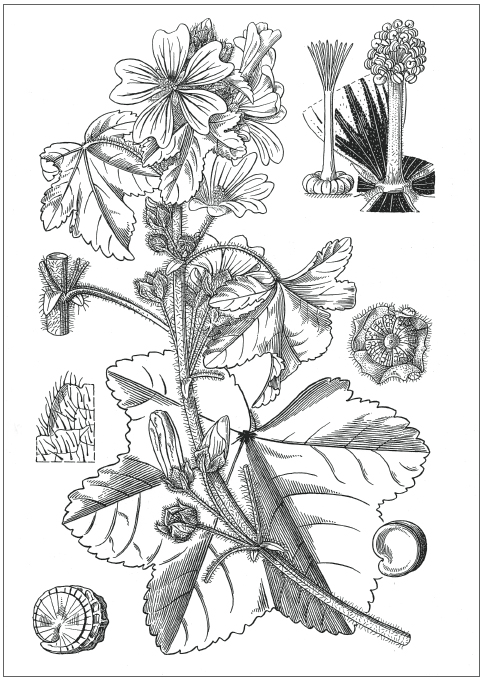
Common mallow ( Malva sylvestris ) From Stella Ross-Craig, Drawings of British Plants (by kind permission of the Royal Botanical Gardens, Kew/photograph courtesy of John Innes Foundation Historical Collections)
I NTRODUCTION
Anything green that grew out of the mould
Was an excellent herb to our fathers of old.
Rewards and Fairies
Rudyard Kipling
The story I wish to tell in this book concerns the use in Britain of everyday plants for treating everyday ailments, and it is the history of self-help rather than of official medicine. For early man, plants were the most obvious source of food, and their use in treating illnesses was probably discovered incidentally. Such discoveries would have obvious importance, and would be passed down from one generation to the next. Once written records began, some of this knowledge began to be recorded, but such recording was, by definition, done by the educated sector of society. The ordinary person would continue to use the knowledge passed down to him orally from his forebears. Little by way of written information would have filtered through to the mass of society. For this reason, a study of the history of medicine based on written records must be skewed heavily in favour of the medicine preached and practised by the educational elite. This book is an attempt to redress the balance, and to give some account of the ordinary do-it-yourself medicine practised by the ordinary person in Britain.
Yet if there is no written record of what is primarily an oral tradition, how can we hope to reconstruct the humble home medicine of the past? We have to rely on fragments of information available in poetry, proverbs, songs and ballads, all of them products of oral traditions. In addition, we can obtain snippets of information from the writings of the literate, on the occasions on which they refer to the practices of their uneducated countrymen. Another source of information may come as more of a surprise. It is still possible, though only just, to obtain information from country people in Britain concerning plant remedies used by them within living memory. Some of these remedies show a quite astonishing story of continuity through the generations. An example will illustrate this. While talking to a man in his sixties, now resident in Norfolk, it emerged that he was brought up in Scotland by his elderly grandmother, herself a great believer in simple plant remedies. He vividly remembered stories she had told him as a child of her own great-grandmother, whose family survived unscathed a fever which wiped out most of her village. The explanation given was that the house was all hung about with onions, and onions were also used as food. The outbreak of fever must have occurred some time during the eighteenth century, yet this story was being told as vividly as if it were a recent occurrence. Moreover, the message of eating onions to combat infection was still very firmly practised in the family, as indeed it is in many areas of Britain. Incidentally, this use of onions is now being vindicated by modern pharmacology.
Next pageFont size:
Interval:
Bookmark:
Similar books «Memory, Wisdom and Healing»
Look at similar books to Memory, Wisdom and Healing. We have selected literature similar in name and meaning in the hope of providing readers with more options to find new, interesting, not yet read works.
Discussion, reviews of the book Memory, Wisdom and Healing and just readers' own opinions. Leave your comments, write what you think about the work, its meaning or the main characters. Specify what exactly you liked and what you didn't like, and why you think so.

